The CIDP+Guillain-Barre Syndrome Diet
The CIDP and Guillain-Barre Syndrome (GBS) diet that helps the most may not be what you think. There’s a lot of restriction out there in the world of autoimmune diets but this–isn’t that. Get ready to dive in to the diet that saved my life and how I use it to live well today.
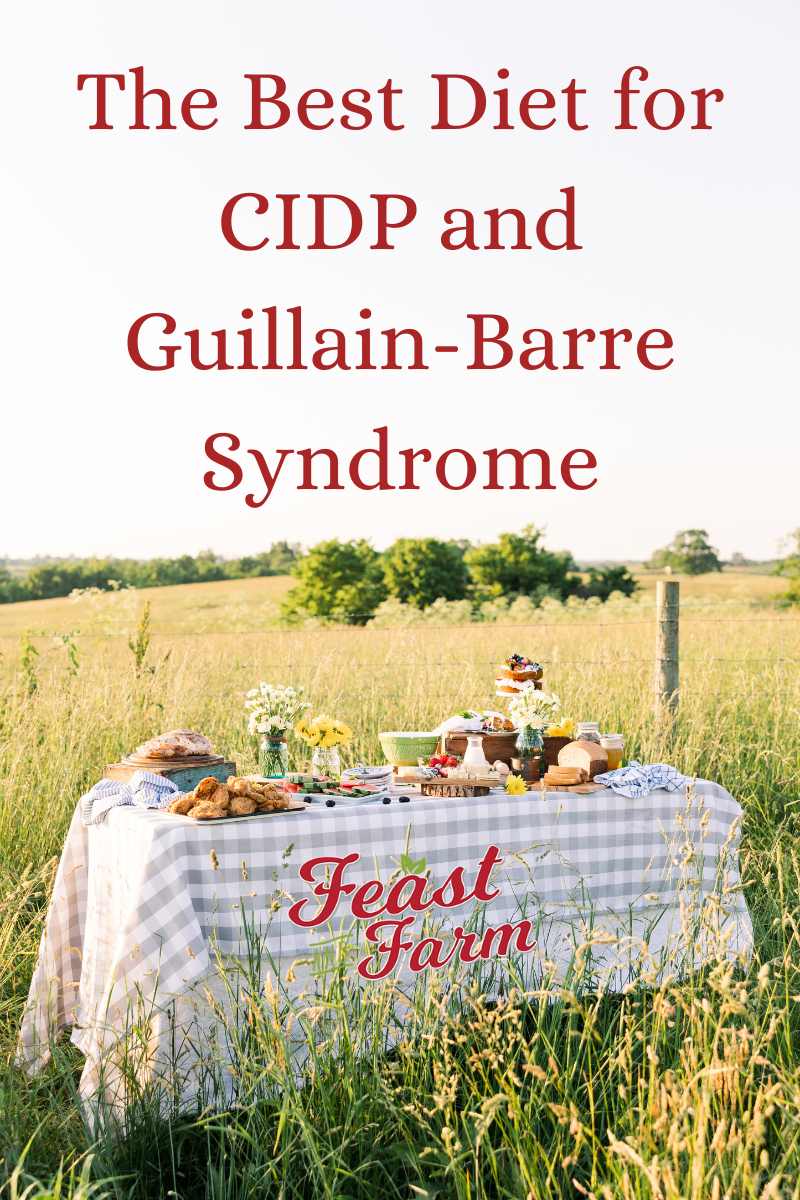
The content contained herein is for informational purposes only. This is not medical advice. Please consult your trained healthcare professional who understands food as medicine for advice on your specific health needs.
Doctors sent me home to “wing it” alone in September 2021. By October I was in a wheelchair.
That’s when I decided not to die.
Who am I and why do I have the right to talk about CIDP and Guillain-Barre Syndrome diets?
I have had CIDP since 2019. I’m also a registered nurse of more than 21 years and I’ve lived both sides of the medical world.
In 2020 I got desperate and tried subcutaneous IG and found that I’m one of the 25% of CIDP/GBS patients who get worse or sees no improvement on this band aid tool.
Doctors sent me home to “wing it” (the doctor’s words) in September 2021. By October I was in a wheelchair and that’s when I decided not to die.

From there I used food and the tools taught to me by my Nutritional Therapy Practitioner and after nine months, I walked myself into the grocery store. You can read my full story about getting diagnosed with CIDP here.
As I write this I’m five years in to my diagnosis and I take no IVIG, steroids or plasmapheresis and I have no progression of disease. It’s not gone but it’s greatly reversed and I live a very full life.
I haven’t seen a neurologist since 2021. That’s not a brag–it’s just that there wasn’t any help there for me anymore and I wasn’t going to look to them to save me. IVIG is not the answer friends.
Too much restriction or not enough: The CIDP diet conundrum
If you’re reading this, then either you or someone you love has this awful disease.
And you may have already had the conversation with your doctor that went something like “No we don’t know what causes it. No there’s nothing you can do but take IVIG. No there’s no diet that helps.”
The truth is that diet is immensely powerful (and your doctor is wrong at no fault of their own).
But most of the autoimmune diets you’ll find are so strict you’ll curl up in the corner and cry while you try to live on coconut milk, cashews ground into cheese and way, way too much kale.
On the other hand, there are tons of celebrities out there toting diets that feature ingredients you need to stay away from like store bought nut milks and grain-based desserts.
We’re going to look at the diet that works best for me and the guidelines around it, and what you can do to make it work for you without excluding many foods you enjoy.
Being Bio-Individual: Making a diet that works for you
There is no one diet that works for everyone as written. Everyone needs a few tweaks here and there. But don’t use the excuse that you are allergic to something or don’t tolerate a specific food as a reason not to try.
As we get in to the food there’s bound to be something I mention that you can’t eat. That’s okay. Your body will make it work without it. Eat more of what you can.
Allergy warning
Of course, never eat any food that you’re truly allergic to. Hives, wheezing, rashes and anaphylaxis are not something to mess with. That said, if a food gives you gas or heartburn, I’d encourage you to try to eat it anyway if you can. There’s a difference between an allergy and a sensitivity or intolerance to healthy foods.
The GAPS diet is the starting place for CIDP and GBS
Dr. Natasha Campbell-McBride is a European physician who has used the Gut and Psychology Syndrome diet on patients to treat the hardest of the hard diseases. Everything from PANDAS in children to yes, Guillian-Barre Syndrome and CIDP.
Some people say she’s a quack but I can’t help it. The diet works. You can read the book for yourself, but it’s meant to be a temporary healing diet (usually used for a year or two) so your gut can heal before transitioning over to a bigger variety of foods.
The GAPS diet has six intro stages that start with a few days of just homemade broth. I never did those. I got great results by eating what’s called “full GAPS” and enjoying all the foods on the plan.
The foundation is stock: Meat stock that is.
Bone broth is all the rage but it’s not for you friend. Too many glutamates in bone broth make it irritating to the neurologic system and you don’t need that. It could actually make you worse.
Instead, make a short cooked meat stock with the flesh, bones and connective tissue from any meat you like. Drink 2 to 3 cups per day forever.
I was drinking this for two weeks when I began to feel the tops of my thighs for the first time. I remember how joyous that was.

You can’t buy it and you can’t make it in a slow cooker or Instant Pot. It’s worth the time to make this healing elixir homemade.
It’s cheap and powerful medicine and you can use the meat for meals!
Foods that help reverse and manage CIDP and GBS
In addition to your meat stock, here’s a list of foods that are the crux of this powerful diet:
- Meats of all kinds like locally raised beef, pastured chicken, wild caught fish and shellfish, pasture raised pork. Meats need to be high quality and locally raised; free from preservatives, fillers and should be fed non-GMO grains if they are grain fed.
- Cooked vegetables. Any vegetables you’d like just not raw. No salads here folks. I roasted, steamed, boiled and sauteed every vegetable I ate and still do for the most part.
- Pasture raised eggs. Eggs from chickens raised on green grass and not in a pen. These eggs have more nutrition and less salmonella than caged chicken eggs and are powerful healing tools.
- Good animal fats. Fat and cholesterol is necessary for re-myelinating your nervous system which is largely fat. Good quality organic butter, beef tallow from grass fed cows, duck fat, coconut oil. ABSOLUTELY NO VEGETABLE/CANOLA OILS.
- Cultured and aged dairy are all fine. No pasteurized, homogenized dairy. No grocery store milk or Kraft block cheeses. It has to have live and active cultures or say it’s been aged. Raw milk is good but the GAPS diet does require fermentation before you drink it–usually as kefir. Creme fraiche or other cultured creams are also allowed.
- Sprouted or activated beans, nuts and seeds. You can have almonds or yes, even almond milk as long as it’s made from nuts that have been sprouted first. Very few store bought versions are. This means they have been soaked in an acid and water solution then dried before you use them. This helps eliminate phytic acid that robs minerals from the body. No canned beans are sprouted.
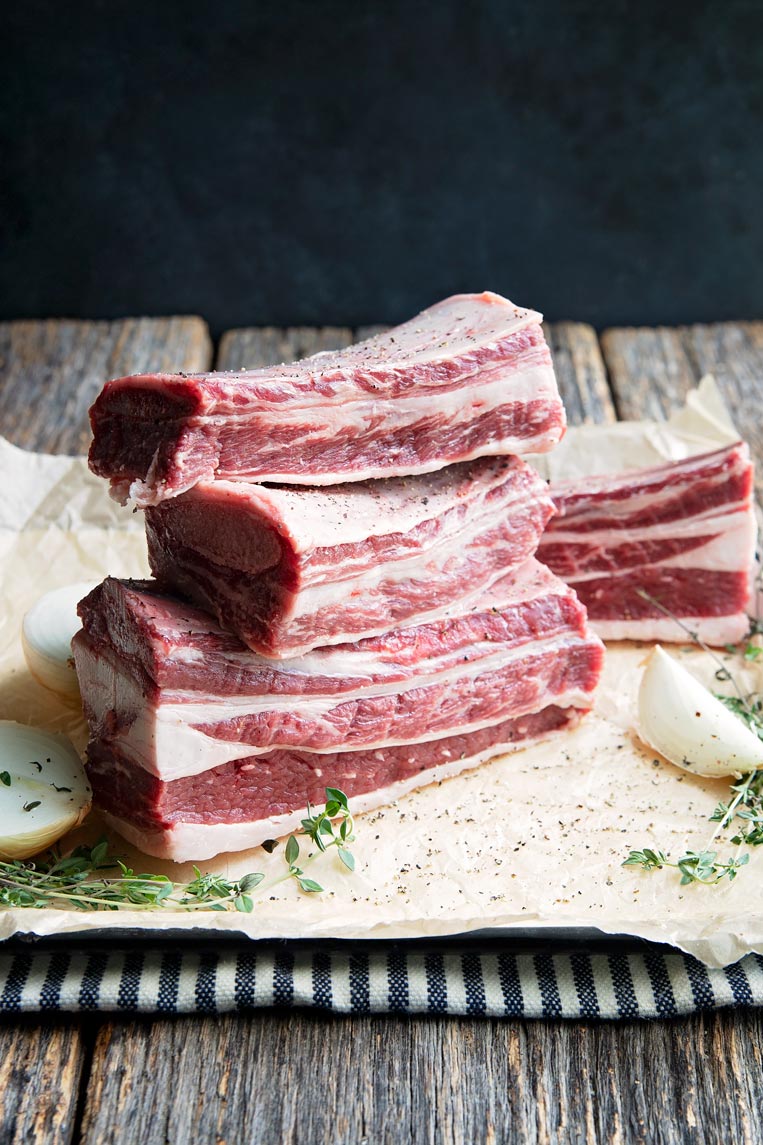
Inflammatory foods to avoid: The big 5
We could talk about this all day but you’re going to avoid most of the middle of the grocery store and any item that has ingredients you can’t buy as a single ingredient. There’s no aisle with modified food starch or maltodextrin to buy.
- Sugar. No sugar folks. Small amounts of honey or maple syrup can be used later but no granulated white sugar. No cookies, pies, cakes or hidden sources of sugar like salad dressings, BBQ sauce or cereal.
- No wheat or white flour. No, there is no bread. Let’s mourn for it now and let it go. No pasta, crackers, donuts…you get the idea. Bye.
- No grains or “gluten free” foods. These are full of grains from rice flour and other starches. They are junk food just the same as anything else. No rice, no quinoa, no chickpeas.
- No vegetable/canola oils. The “hateful 8 oils” include vegetable, canola, sunflower, safflower and a few others. These inflammatory oils are in everything from mayonnaise to Hamburger Helper and salad dressing. Your beloved “heart healthy” spreadable butter is leavin’.
- No fast food. Nada. Zip. Filled with bad oils, gluten contamination and a splattering of factory made ingredients you’ll never get better on any of it. You’ll learn to eat before you go, carry emergency snacks and plan ahead.
How long does it take for a CIDP diet to work?
Friends, it takes a while. For me, it was about 7 months before I got even a glimmer of improvement. Natural healing is slow. And that 7 months included lots of detox work plus tremendous lifestyle changes.
You’ll have to believe it’s worth trying because it will scare the pants off of you when you have your first big flare and are sure you are dying right then and there.
Push through. Get help from an NTP and keep at it.
Finding your underlying causes is essential in addition to food. I had about 12 issues from heavy metal toxicity, to candida overgrowth in my gut and a chronic virus that was SUCH a big part of my symptoms. You will need to find someone to help you explore your root causes properly or the reason your body is attacking itself will never go away and neither will the disease.
Some recipes to get you started
This website is full of all sorts of recipes. I’ve been running this site for years before I got sick so there’s a lot here that doesn’t mesh with my current way of eating. That said, I’ve made a lot of adjustments to recipes to help you have great resources.
Try these ideas:
- Sausage and pepper sheet pan meal
- Bunless deluxe hamburgers
- Roasted garlic shrimp
- Baked salmon patties (replace the crushed crackers with blanched almond flour)
- Chicken power bowls
- Crustless quiche
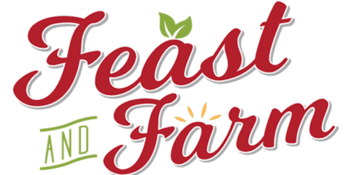

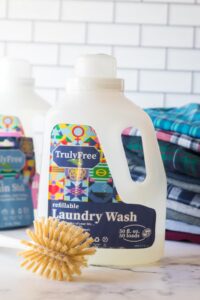

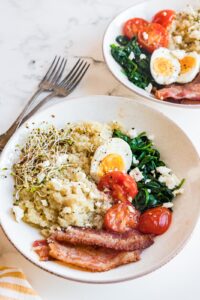
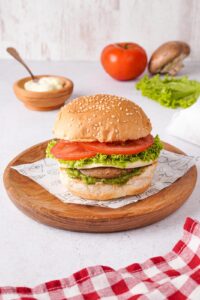
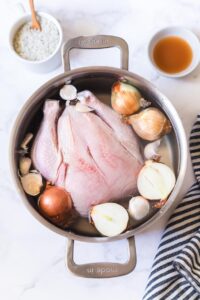
About the Author
Rachel Ballard, RN, BSN brings more than 20 years of professional nursing expertise to Feast and Farm. With a love for nutrient dense foods that support wellness, she works to distill complex health information and current trends into recipes that fuel the best version of yourself. Read more about Rachel here.